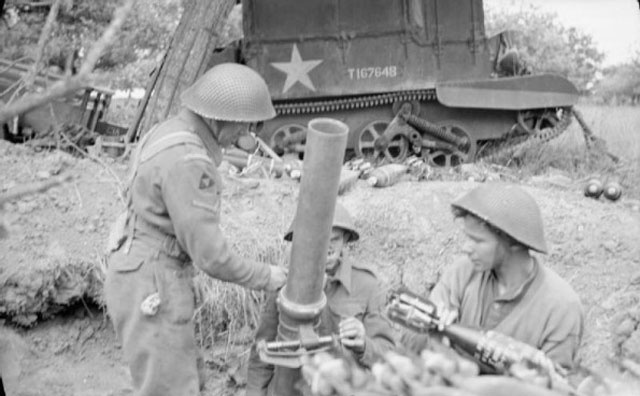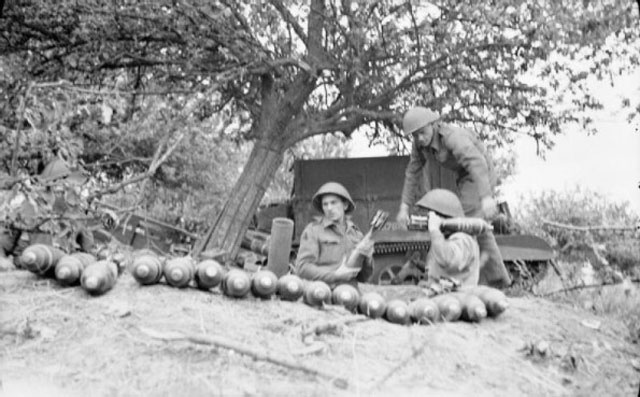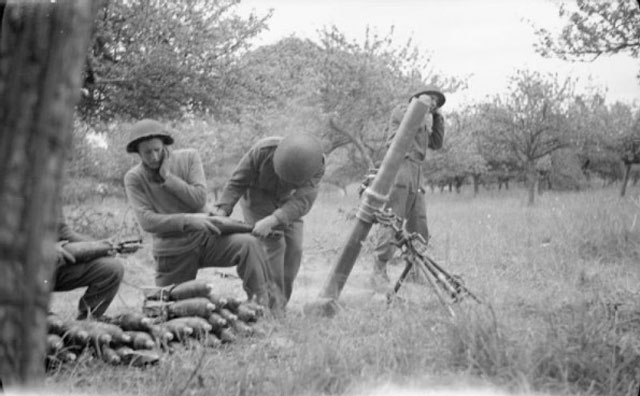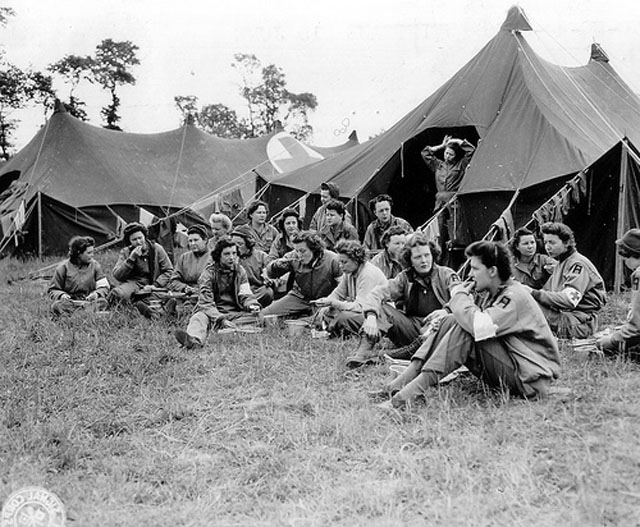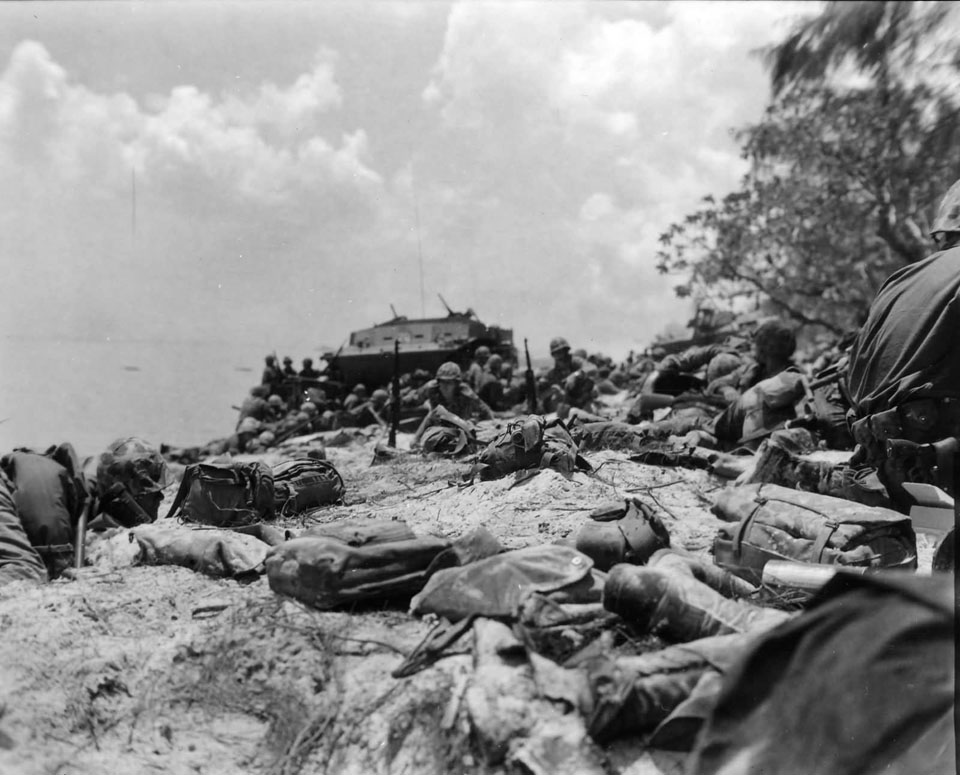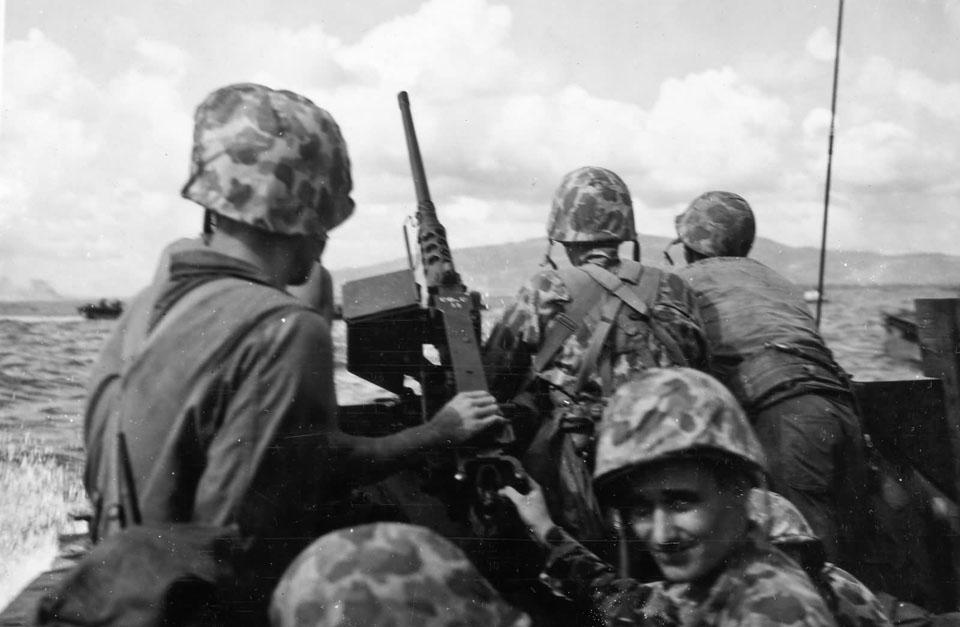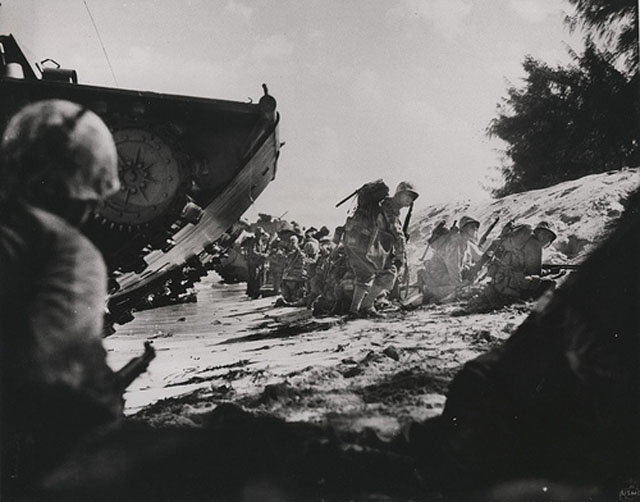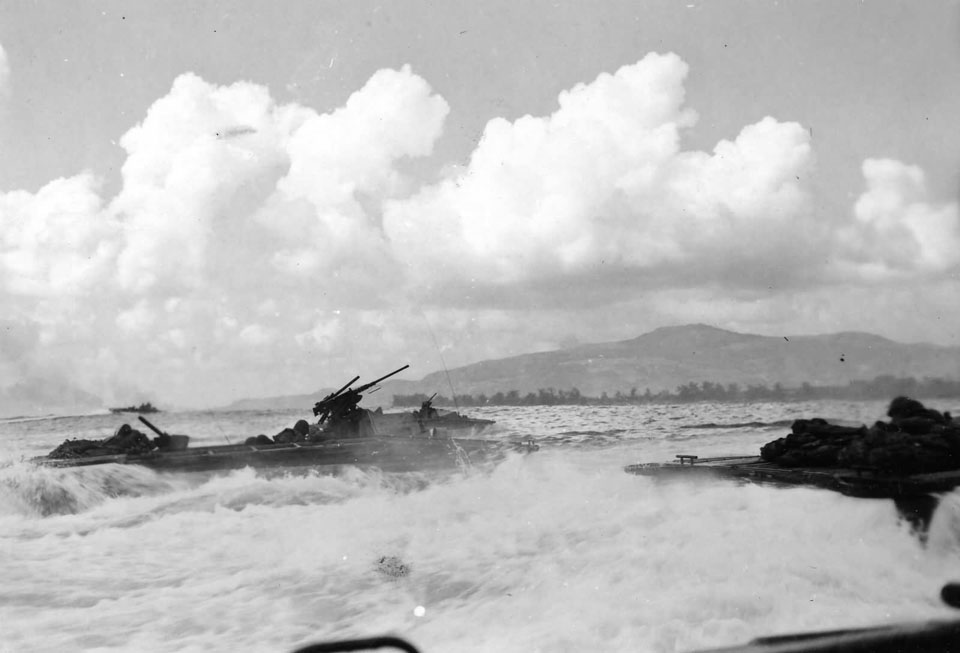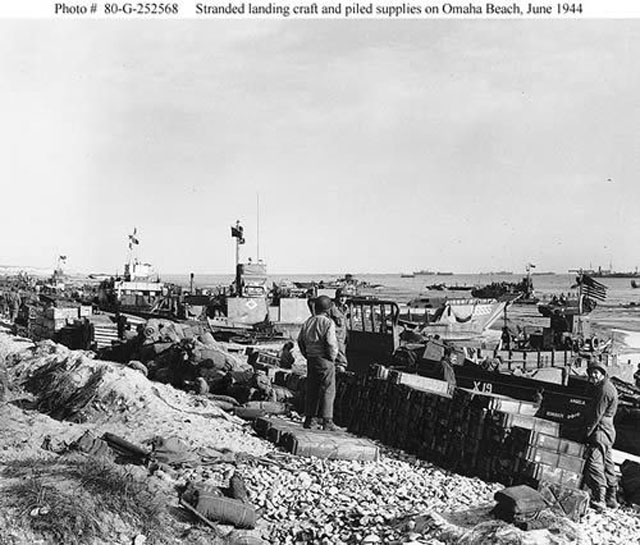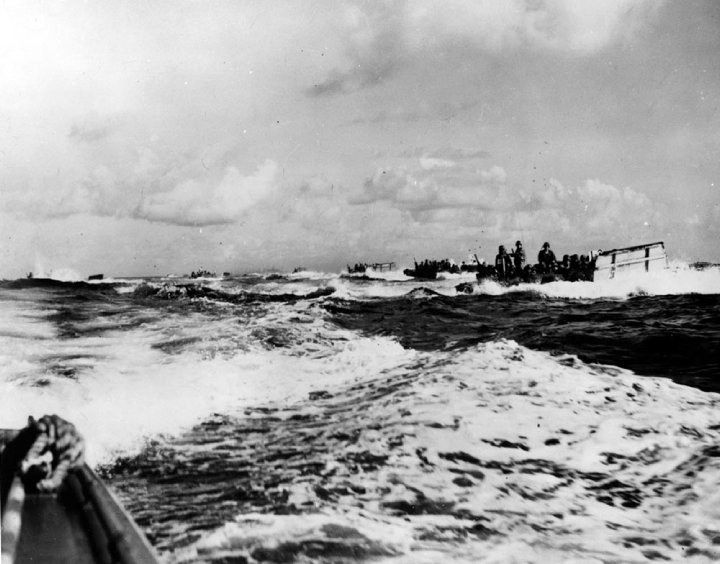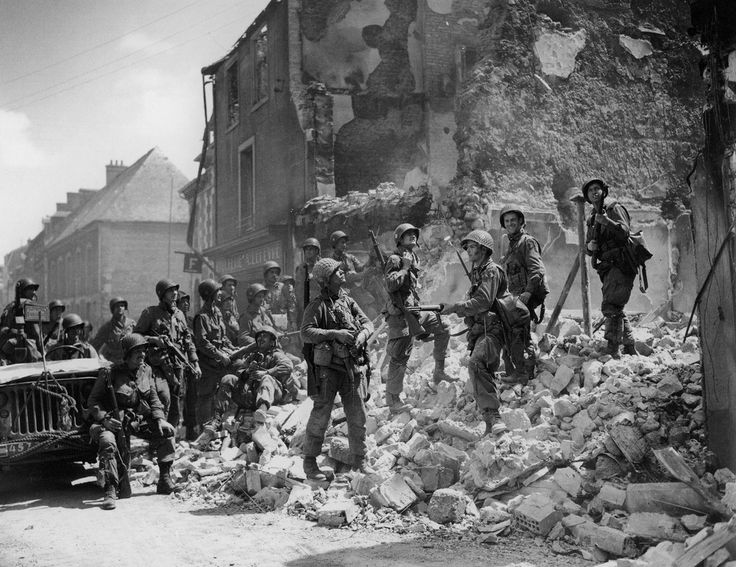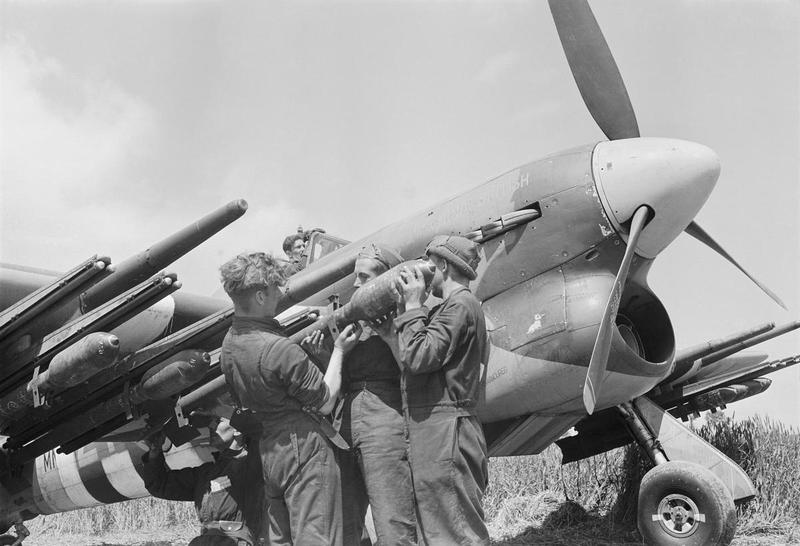Air Operations, Asia
(14th?)47 B-29 Superfortresses of the US 20th Bomber Command, taking off from China, carry out their first raid on Japan. They drop 221 tons of bombs on steelworks at Yawata(Yahata?) on Kyushu Island. This is the first attack on the home islands since the Doolittle raid more than 2 years before.
[Air Operations, Bonin and Volcano Islands
Seeking to sever the only viable route of land-based aircraft reinforcements from Japan to the Marianas, and despite heavy seas, carrier aircraft from Task Group 58.1 and Task Group 58.4 mount powerful afternoon attacks against airfields, fuel supplies, and barracks on Chichi Jima, Haha Jima, and Iwo Jima. Losses are 2 TBMs, 2 SB2Cs, 3 F6Fs, and all 13 men who flew in them. VF-1, VF-2, and VF-15 F6Fs down 40 A6M Zeros over Iwo Jima between 1445 and 1555 hours.
[Air Operations, Carolines
39 XIII Bomber Command B-24s attack the Truk Atoll.
[Air Operations, CBI
BURMA- 27 10th Air Force fighter-bombers attack Mogaung and Myitkyina.
- 24 308th Heavy Bomb Group B-24s attack warehouses at Canton.
- 24 14th Air Force P-40s attack Japanese Army cavalry at Chuchou and supply craft on the Siang-Chiang River.
Air Operations, East Indies
380th Heavy Bomb Group B-24s attack airfields on Timor.
[Air Operations, Europe
RAF BOMBER COMMANDDaylight Ops:
- 297 aircraft of Nos. 1, 4, 5, 6 and 8 Groups carry out attacks on German light naval vessels now gathering in Boulogne harbor. Included in this total are 155 Lancasters, 130 Halifaxes and 12 Mosquitos. The tactics employed and bombing results are similar to the attack on Le Havre the previous night. The only details from a short French report called this the worst raid on Boulogne of the war, with severe damage to the port and surrounding areas.
- 1 Halifax is lost.
- 227 aircraft of Nos. 4, 5 and 8 Groups attack an ammo dump at Fouillard and a fuel dump at Châtellerault. In this total are 119 Lancasters, 99 Halifaxes and 9 Mosquitos. The raid at Fouillard, carried out by No. 4 Group with Pathfinder marking, hits the northwestern section of the target and the No. 5 Group raid at Châtellerault destroys 8 fuel sites out of 35 in the area.
- There are no losses.
- 224 aircraft of Nos. 3 and 8 Groups attack railway yards at Lens and Valenciennes. In the total are 184 Lancasters, 30 Stirlings and 10 Mosquitos. The raid takes place in clear visibility and both targets are accurately bombed.
- 6 Lancasters are lost on the Lens raid and 5 on the Valenciennes one.
- 31 Mosquitos are sent to Gelsenkirchen, 7 Stirlings and 4 Halifaxes lay mines off Channel ports, and there are 13 Serrate and 21 Intruder patrols.
- 1 Mosquito is lost on the Gelsenkirchen raid.
FRANCE:
- Nearly 1,000 8th Air Force B-17s and B-24s attack rail bridges and viaducts, marshalling yards, highway bridges, and airdromes.
- 2 B-17s are lost
- 36 VIII Fighter Command P-38 fighter-bombers attack a rail bridge at Etaples.
- 1 P-38 and its pilot are lost
- 177 VIII Fighter Command fighters mount sweeps ahead of the various heavy-bomber formations.
- 9 Luftwaffe fighters are downed over northern France by VIII Fighter Command and 9th Air Force pilots between 0705 and 2000 hours.
- Nearly 200 8th Air Force B-17s attack an oil refinery at Hannover or nearby targets of opportunity.
FRANCE:
- IX Bomber Command B-26s and A-20s mount more than 550 sorties agains rail and road targets, ammo dumps, and a German armored division commmand post.
- 9th Air Force fighters and fighter-bombers mount more than 1,400 escort or tactical sorties.
ITALY:
- 12th Air Force B-25s and B-26s attack bridges around Florence and La Spezia.
- XII TAC A-20s attack ammo dumps.
- XII TAC fighters and fighter-bombers attack roads and bridges immediately north of the battle area.
FRANCE:
- 15th Air Force pilots of the 1st, 14th, 31st, 82nd, and 325th Fighter Groups involved in fighter sweeps over several Luftwaffe airdromes in southern France down 5 Luftwaffe fighters between 1155 and 1210 hours.
Air Operations, Japan
During the night, in their first-ever strategic-bombing attack against targets in Japan, 47 of 68 58th Very Heavy Bomb Wing B-29s staging through airfields around Chengtu, China, drop a total of 221 tons of bombs on a steel plant at Yawata, Kyushu. Also, 9 B-29s attack targets of opportunity. 1 B-29 is downed by antiaircraft fire over Yawata and 5 B-29s are lost in operational accidents. Also, a B-29 that lands at the airfield at Neihsiang, China, because of engine problems will be destroyed on the ground on June 16 by Japanese fighters and bombers. 54 crewmen and a correspondant are killed in the various crashes.
This mission all but exhausts fuel supplies stockpiled at the Chengtu bases and results in the virtual curtailment of B-29 combat missions.
[Air Operations, Marianas
A force composed of 10 P1Y 'Galaxy' bombers, 3 D4Y 'Judy' dive bombers, and 11 A6M Zeros based at the Yap Atoll and organized in two waves attack Task Group 58.2 and Task Group 58.3 between 1805 and 2230 hours. F4U night-fighters, F6Fs, and FMs down an undetermined number nearly over the carriers. Antiaircraft fire also brings down several of the attackers. Japanese records concede the loss of 11 aircraft in all.
[Air Operations, New Guinea
- V Bomber Command B-24s, B-25s, and A-20s, and V Fighter Command fighters attack a village in the Wakde Islands and barges around Manokwari.
- USAAF bombers scheduled to support the Marianas offensive from the Mokmer airfield on Biak are unable to do so because Japanese Army ground forces continue to dominate the airbase from unsecured high ground.
Battle of the Atlantic
The German submarine U-860 is sunk by aircraft (VC-9) from the US escort carrier Solomons in the South Atlantic area.
| Class | Type IXD2 |
| CO | Fregattenkapitän Paul Buchel |
| Location | S Atlantic, S of St Helena |
| Cause | Air attack |
| Casualties | 42 |
| Survivors | 20 |
CBI
BURMAIn the NCAC area, indecisive fighting continues for Myitkyina.
On the Salween front, Chinese forces containing Sung Shan--a triangular hill mass that dominates 36 miles of the Burma Road where it crosses the Salween--make a limited attack that overruns the peak at the southeast corner. The efforts to take another peak in the same area are unsuccessful.
[Eastern Front
The Finnish IV Corps withdraws, under pressure from Soviet 21st and 59th Armies, to positions before Viipuri.
FINNISH SECTORThe Finns fall back the their final defense line before Vipurii, closely pursued by the 21st and 23rd Armies.
[Italy
The IV Corps of the US 5th Army reaches the Ombrone River which it begins to cross at sundown. Patrols are sent toward Grosseto.
The VI Corps, withdrawn from the front a little time earlier, is assigned to the US 7th Army for Operation ANVIL, the Allied landing in the south of France.
In the British sector, while the advance of the V Corps along the Adriatic coast continues, the British 3rd Div replaces the 4th Indian Div in the front line.
[Marianas
While the heavy ships of TF 52 keep shelling the main phase of the Saipan landings, Operation FORAGER, gets under way. Adm Richmond K. Turner is in command of the support ships as well as the landing vessels and Gen H. M. Smith leads the V Amphibious Corps. Altogether there are 67,500 men in the land force mostly from the 2nd and 4th Marine Divs (Thomas E. Watson and Harry Schmidt). The defending forces come from both the Japanese Army and Navy. Gen Yoshitsugo Saito commands the reinforced 43rd Inf Div and Vice-Adm Chuichi Nagumo leads the naval contingents, in all perhaps 30,000 men. On Saipan the Japanese have little more than 60 guns. The Japanese minelayer No. 101 is sunk by gunfire from the US naval ships.
The air and naval bombardment begins at 5:45a.m. and lasts for three hours. The ships delivering the bombardment include 7 battleships, 11 cruisers and 26 destroyers. The attacks go in north and south of Afetna Point. 700 amphibious craft of the Marines go ashore at 8:40a.m. on the west coast of Saipan. The landings are farther apart that has been intended and the fierce Japanese resistance prevents the beachheads being linked up. The 2nd Div lands north of Point Afetna, the 4th Div south of it. The Japanese artillery is especially destructive of the landing craft and opens large gaps among the men who have just reached the beaches. At the end of the day the Marines have established a beachhead 5 and 1/2 miles wide and 3/4 of a mile deep, but its flanks are not really secure and Point Afetna is till in Japanese hands.
As usual, the Japanese counterattack during the night and suffer heavy losses, but are not able to drive the Americans back into the sea. The Marines' defense is made easier by the continual firing of flares. The reserve regiment has made a landing to the north at the same time as the main landing, to draw off the enemy forces. Meanwhile another division, the 27th Inf, is arriving. The battleship Tennessee is damaged by fire from Japanese coast defense guns.
At 9:30a.m. Vice-Adm Jisaburo Ozawa, in command of the Japanese naval air fores fo Operation A-Go, the project conceived by Adm Toyoda for the destruction of Task Force 58, receives an order from Toyoda that echoes the famous order given by Adm Togo before the historic naval battle of Tsushima against the Russians in 1905: 'The fate of the Empire depends on this battle. Everyone must give all he has.'
[New Guinea
On Biak, Gen Eichelberger arrives and takes command of TF HURRICANE. The 41st Infantry Division commander Maj-Gen Horace Fuller, immediately submits his resignation to Lt-Gen Krueger, stating that the 6th Army commander has given his unit too big a mission to be accomplished in such an impossibly short timeline. Eichelberger appoints Brig-Gen Jens A. Doe as the new division commander. Forward movement is limited by a considerable, but unsuccessful, Japanese counterattack with tanks from their strongpont in their West Caves stronghold. The 1st Battalion, 162nd Infantry, presses slowly to the south toward a ridge where the 3rd Battalion is fighting. Efforts ot the 162nd Infantry to close the gap between the 3rd and 2nd Battalions are frustrated, but the gap is narrowed by about 500 yards. Mokmer airfield cannot be used to support operations against the Marianas, since it is still under enemy fire.
On the mainland farther east, Australian troops occupy Hansa Bay.
[Occupied France
In the St Donat incident Russo-Mongolian auxilaries of German Army loot and destroy small towns in the south of France in the first of a series of reprisals for alleged Communist-led Resistance activities. 53 women and girls are brutally violated and left for dead.
The Resistance attacks the Air Liquide liquid oxygen plant at Roubaix.
[Pacific
- The Japanese submarine chaser CH-7 is sunk by mine south of the Palaus.
- The US submarine Swordfish (SS-193) attacks a Japanese convoy sinking the army cargo ship Kanseishi Maru (4804t) about 150 miles north-northwest of Chichi Jima.
V-Weapons
The launching of V1s against England is resumed during the night; 244 bombs are launched, of which 144 cross the Channel and 73 of these reach London, causing severe damage. Churchill comments: 'The impersonal nature of the new weapon has a depressing effect.'
[Volcano and Bonin Islands
Airfields, barracks and fuel dumps in the islands of Iwo Jima, Volcano Islands, and Chichi Jima and Haha Jima, in the Bonin Islands, are attacked by aircraft taking off from 2 groups of US aircraft carriers commanded by Rear-Adms Joseph J. Clark and William K. Harrill. Iwo Jima is attacked again the next day.
United States, Planning
Gen MacArthur issues RENO V, a revision of earlier plans focused on offensive operations against the Japanese on New Guinea. RENO V lays ou the details for an invasion of Mindanao for October 25 and an assault on Leyte in November. With airbases established on these two islands, American forces would have sufficient air cover to attack Luzon and other islands in the Philippines in preparation for an invasion of Formosa. MacArthur believes any operations against Formosa will require the capture of Luzon and the support of the Pacific Fleet. For his part, Adm Nimitz supports the Leyte invasion, but continues to have doubts on the utility of landing on Luzon.
To support anticipated future operations against the Philippines, the Far Eastern Air Force (FEAF) is formed, combining the 5th and 13th Air Force. Gen George C. Kenney is designated as FEAF commander, and FEAF headquarters is established in Brisbane, Australia. Lt-Gen Ennic C. Whitehead takes command of the 5th Air Force with headquarters at Nadzab, New Guinea. 13th Air Force headquarters moves from Guadalcanal to Los Negros Island, incorporating the 13th Air Task Force headquarters already operating on the island. Maj-Gen St. Clair Streett is designated as the commander of the 13th Air Force. The position of Commander Air Solomons (COMAIRSOLS) is redesignates as Commander Air North Solomons (COMAIRNORSOLS). The B-25 Mitchells and fighters, together with other COMAIRSOLS aircraft, will continue to attack targets supporting the neutralization of Rabaul and limiting Japanese actions on Bougainville and Buka Islands.
[Western Front
In the Cotentin the US VIII Corps under Gen Troy Middleton becomes operational and takes over the sector on the west side of the peninsula. Gen Lawton Collins, commading the US VII Corps, maintains that his unit's principal efforts must be directed towards cutting the Cotentin peninsula in two so as to capture Cherbourg as quickly as possible. Units of VII Corps take Quineville.[WF]
[Images from June 15, 1944
|
|
|
|
|
|
|
|
|
|
|
|
